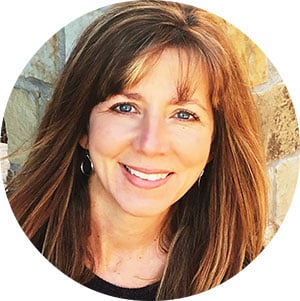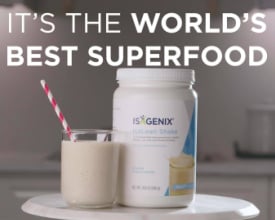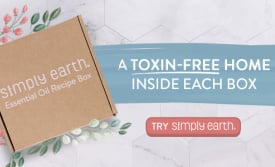Pinterest is a marketing powerhouse that every blogger should take advantage of.
Things are constantly changing on Pinterest so this post will cover some of the basics so you understand the platform if you aren’t already using it.
Read to the end for free Pin Templates.

Top Reasons You Need To Be Using Pinterest
These are some of the top reasons you should be using Pinterest for your business if you want more traffic to your website and more sales.
1. High Engagement
First off, let’s talk about the audience.
Pinterest users are not your average social media scrollers; they are planners, dreamers, and most importantly, doers.
When someone saves a pins there’s a good chance they intend to act on it.
This is a marketer’s dream!
Imagine your digital courses, guides, products, or templates being discovered by someone who’s actively looking to learn or solve a problem.
That’s the kind of engagement money can’t buy!
2. Long Pin Lifespan
Now, let’s chat about the lifespan of a pin.
In the fast-paced world of social media, content often has the shelf life of a banana—here today, gone tomorrow.
Not so with Pinterest!
A well-crafted pin can continue to drive traffic for months, even years after it’s posted.
This is because Pinterest functions more like a search engine than a traditional social media platform.
People search for ideas, find your pins, and voila!
They’re led straight to your website.
It’s the gift that keeps on giving.
3. Visual Appeal
Last but not least, let’s talk aesthetics.
Whether it’s your latest blog post, ebook, or a digital planner, you have the opportunity to showcase your products in a visually compelling way.
Use vibrant images, play with text overlays, and experiment with different design elements to make your pins pop.
Remember, a picture is worth a thousand words—or in your case, potentially thousands of dollars in sales.
Important Pinterest Terms To Know
Like every social media site, Pinterest has its own lingo you should familiarize yourself with to set yourself up for success.
To help you out, here’s a glossary.
1.Pinner: LinkedIn has members. Snapchat users are Snapchatters. And Pinterest has Pinners.
In other words, a Pinner is the branded term for a person who uses Pinterest.
2. Pins: A Pin is a primary post published on Pinterest.
Pins include images or videos and can link back to an original source, much like a website bookmark.
3. Promoted Pins: Promoted Pins are a kind of Pinterest ad.
They are Pins that companies have paid to promote so that more Pinners are likely to see them.
These Pins appear in the home feed, category feed and search results, and include a “Promoted” label.
4. Repins: Think of a Repin as a share on Facebook or a Retweet on Twitter.
A Repin is when someone Pins a post they like (but that they didn’t create) to one of their boards.
5. Rich Pins: Rich Pins automatically pull more information from your website to the Pin.
The point is to provide more information, such as product availability and up-to-date pricing.
6. Video Pins: These are much like regular Pins, but instead of a static photo, they feature a video that loops.
How To Design Pins That Will Make People Click
Notice, I didn’t say save.
You want people to click the pin and go to your website.
Your pins need to be eye-catching, informative, and most importantly, clickable.
Let’s break it down.
1. Use High-Quality Images
First and foremost, the quality of your images is crucial.
Blurry or pixelated images are the Pinterest equivalent of showing up to a job interview in pajamas—not a good look.
Use high-resolution images that are relevant to the content you’re promoting.
If you’re selling a digital guide on “How to Start a Podcast,” for example, an image featuring a microphone or a person speaking into one could be a great fit.
The image should be able to tell a story on its own, even without the text overlay.
2. Use Text Overlay
This is your chance to add context to your image and make your pin stand out.
The text should be large enough to read easily on both desktop and mobile devices.
Use contrasting colors to make the text pop, but ensure it doesn’t clash with the image behind it.
The text should provide enough information to make the viewer want to learn more.
For instance, if you’re sharing a blog post your text overlay could say something like “The Best Tasting Protein Shake Recipes!”
It’s compelling and it’s specific.
3. Have A Call to Action (CTA)
You’ve got their attention with a high-quality image and piqued their interest with a compelling text overlay.
Now what?
You guide them to the next step with a clear call to action (CTA).
This could be as simple as “Click to Learn More,” “Grab Your Guide,” or “Start Your Journey.”
The CTA should be placed prominently but shouldn’t overshadow the main content of the pin.
You can place it at the bottom or even integrate it into the main text overlay if it fits naturally.
It’s like crafting a mini billboard for each of your digital products, blog posts, or tangible products that speaks directly to those most likely to be interested in them.
5. Help Guide Your Audience
Educational content, such as guides or tutorials, can facilitate easy comprehension of how to create a look, room, or recipe – thereby inspiring your audience to engage and experiment with new ideas actively.
6. Focus On The Future Solution
Emphasize solutions rather than dwelling on problems, as audiences are drawn to positive outcomes, innovative ideas, novel approaches, and comprehensive step-by-step guides.
7 . Deliver Value When They Get To Your Site
Ensure a pinner knows they are in the right place by consistently providing value.
Your pin should direct users to the appropriate webpage containing the complete recipe, instructions, or tutorial your audience is looking for, creating a smooth and effortless brand journey.
Interested in Digital Marketing? Learn about my system here
Example Pin Image
This pin gives the reader just enough information to make them know what the article is about with a call to action to click the pin for the recipe.
This isn’t anything special and there are certainly better-looking pin images but it still gets me traffic to my website 3 years after it was first posted.
What Not To Do On Pinterest
As I said at the beginning, Pinterest is not a quick traffic source and you need to stay on top of best practices.
For instance, here is some outdated advice:
- Posting images with affiliate links
- Using Ideal Pins
- Posting the same URL to 5 different boards in the same day
- Posting the same image to 5 different boards in the same day
- Neglecting trending topics
- Not posting seasonal content
- Posting images without text overlays except in certain niches
- Not using keywords in your board descriptions
- Posting personal pins to your business account
- Using broad board description, for example, “baby stuff”
Where To Learn More About Pinterest
I learned most of what I know about Pinterest from a few good guides and a mastermind I’ve been in for 3 years.
In January, I posted 3 different pins for the same URL and they brought me over 20,000 visitors to my site in 2 months!
It’s not hard but you need to do it right or you’ll get frustrated.
My top recommended training:
Pinterest Strategies and Carly’s Content Master Mind Club.
Grab Her Free Pin Templates Here
Bottom Line
If Pinterest isn’t part of your marketing strategy yet, it’s high time to pin it to the top of your to-do list! 😁
If you’ve already gotten your Pinterest account up and want me to take a look at it send me an email at stacy@alesstoxiclife.com.








